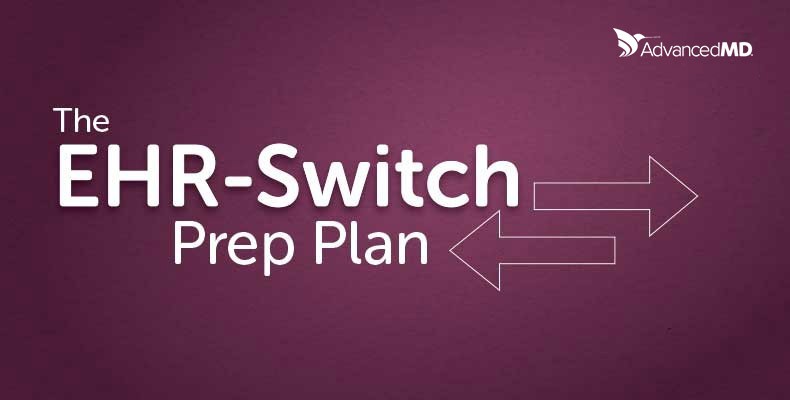
The only thing that may be more stressful than selecting your first EHR system is selecting a replacement EHR.
Many practices are finding that their first EHR system lacked the functionality and vendor support to help them meet Meaningful Use requirements, prepare for ICD-10 and streamline workflow. Although EHR shopping can seem daunting, providers can’t waste time with an EHR that simply doesn’t work for them. If you are considering an EHR switch, read our Prep Plan, which will provide you with tips for a better EHR shopping experience this time around.
Step 1: Gather input & feedback
Take the time to find out the specific reasons you are switching EHRs in the first place. Talk to your stakeholders–physicians and office staff members–to find out what their frustrations are with your current EHR system. Remember, the more specific staff members are, the easier it will be to find solutions to their problems.
A few questions to ask:
- What features aren’t working like they should?
- Where is time wasted?
- Why are people avoiding the EHR?
Understanding why the first EHR is failing can prevent history from repeating itself.
Step 2: Create your shopping list
Think of EHR shopping like going to buy a car – you typically know how many cup holders you want before you even step onto the lot.
Create an “EHR Shopping List” to help you narrow down your options. Although every EHR has different strengths, clearly writing down what is important early on will help zero in on the EHR that’s best for your practice. Ask each stakeholder to provide you with their must-have options and their nice-to-have features to help your write your master list.
Below are some of the most common must-haves in a new EHR:
- Cloud-based system
- ICD-10 readiness
- Meaningful Use certifications
- True interoperability
- Robust financial reporting
- World-class mobile capabilities
- Intuitive scheduling with automated reminders
- Powerful online patient portal
- Proven billing solutions
- Painless upgrades and scalability
- Vendor with staying power
- Solutions for multi-provider, multi-locations practices
This list will help you eliminate lackluster EHRs from your hunt, and it will give you guidance when speaking with potential EHR vendors.
Step 3: Begin research
Begin reading online client reviews to see which EHR vendors are making the grade. Look to see which features users rant or rave about, then compare those findings to your shopping list. Also, review vendors’ sites for product demos: these online demos can be a great place to see how certain features work and look.
Asking people in your professional network is also a great way to see which EHRs should be considered. Let your peers’ experiences help guide you while shopping for a new EHR.
Step 4: Set up vendor demos
Once you have a narrowed down your list to a few contenders, set up a personalized demo with each of your finalists.
A good EHR vendor will provide you with a demo that highlights the features, functionality, and implementation of a new EHR. Below are a few questions you should ask during EHR demos:
- How will you help our practice implement the new EHR?
- What are the options for data migration?
- How do you manage updates and upgrades?
- What type of training is available for providers and staff?
- What are the hardware requirements for your EHR?
- What certifications does your EHR have?
- What are the pricing and contract structures?
- How can I customize my EHR platform for my specific needs?
- What type of ongoing support do you provide for your EHR?
- What makes your EHR different from your competitors?
You may have other specific questions to add to the list: write them down to be sure they are addressed during the demo. Also, refer back to your list of must-have and desired features.
If possible, allow key stakeholders to preview the software; more than one set of eyes can help ensure nothing critical is missed.
A little preparation can help you find the best EHR for your practice more efficiently. Although switching EHRs can be a daunting task, following a carefully thought out plan will make sure that you are up and running in as little time as possible.
Looking to switch EHRs?
Schedule a personalized demo with one of our EHR experts to see why you’ll love AdvancedMD. Get started now.

